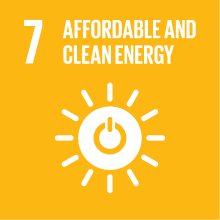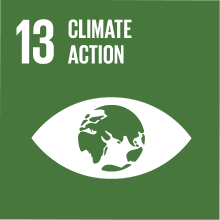CHEMISTRY OF TRANSITION ELEMENTS AND LABORATORY - MOD.1
- Academic year
- 2019/2020 Syllabus of previous years
- Official course title
- CHIMICA DEGLI ELEMENTI DI TRANSIZIONE E LABORATORIO - MOD.1
- Course code
- CM0315 (AF:305790 AR:168273)
- Teaching language
- Italian
- Modality
- On campus classes
- ECTS credits
- 6 out of 12 of CHEMISTRY OF TRANSITION ELEMENTS AND LABORATORY
- Degree level
- Master's Degree Programme (DM270)
- Academic Discipline
- CHIM/03
- Period
- 1st Semester
- Course year
- 1
- Where
- VENEZIA
Contribution of the course to the overall degree programme goals
Expected learning outcomes
I) Knowing the metal-ligand interactions and understanding the influence of the ligands on the electronic structure of the metal centres.
II) Knowing the relationships between the electronic structure of the metal centres and the geometry of the coordination compounds.
III) Understanding the relationships between complex structure and spectroscopic and magnetic properties.
IV) Understanding the reactivity of the transition elements as a function of the electronic structure and of the coordination sphere.
2. Ability to apply knowledge and understanding.
I) Being able to use the concepts learned to foresee and logically interpret the chemical-physical properties of a complex.
II) Being able to propose coherent and feasible syntheses of coordination and organometallic compounds.
3. Ability to judge
I) Being able to evaluate the effects induced by changes in the electronic configuration of metal centres and in the coordination sphere.
II) Being able to recognize the basic elements determining the stability of a complex, so as to recognize similarities and differences between coordination compounds.
4. Communication skills
I) Being able to use the appropriate scientific-technical terminology and symbols to discuss the course contents.
II) Being able to interact constructively with the teacher and with the other students.
5. Learning skills
I) Being able to synthesize in an autonomous way the salient aspects of the concepts expressed in class.
II) Being able to make logical connections between the topics of the course.
III) Being able to apply the theoretical concepts learned in the inorganic synthesis laboratory.
Pre-requirements
Contents
I) Coordination compounds: theory, coordination number and geometry, kinds of ligands, nomenclature.
II) Transition elements: definition, electronic configuration, main features.
III) Complexes with sigma-donor, pi-donor and pi-acceptor ligands. Carbonyl, isocyanide, phosphine and nitrosyl complexes: synthesis and some properties.
IV) Transition element chemistry: general considerations.
V) Coordination and organometallic chemistry of group 4 elements (Ti, Zr, Hf). Oxidation states, coordination geometry, ligands, reactivity, applications.
VI) Coordination and organometallic chemistry of group 5 elements (V, Nb, Ta). Oxidation states, coordination geometry, ligands, reactivity, applications.
VII) Coordination and organometallic chemistry of group 6 elements (Cr, Mo, W). Oxidation states, coordination geometry, ligands, reactivity, applications.
VIII) Coordination and organometallic chemistry of group 7 elements (Mn, Tc, Re). Oxidation states, coordination geometry, ligands, reactivity, applications.
IX) Coordination and organometallic chemistry of group 8 elements (Fe, Ru, Os). Oxidation states, coordination geometry, ligands, reactivity, applications.
X) Coordination and organometallic chemistry of group 9 elements (Co, Rh, Ir). Oxidation states, coordination geometry, ligands, reactivity, applications.
XI) Laboratory: Synthesis and characterization of coordination and organometallic compounds in relation to the theoretical contents of the course. Conductimetry, spectroscopic (IR, UV-VIS, PL, NMR) and magnetic characterization of transition metal complexes.
Referral texts
I) F. A. Cotton, G. Wilkinson, C. A. Murillo, M. Bohmann, Advanced Inorganic Chemistry, 6th ed .; Wiley-Interscience, 1999.
II) J. Ribas Gispert, Coordination Chemistry; Wiley-VCH, 2008.
III) C. E. Housecroft, A. G. Sharpe, Inorganic Chemistry; 4th ed., Pearson, 2012.
IV) Lecture and laboratory notes and additional teaching materials available on Moodle platform.
Assessment methods
Type of exam
Teaching methods
Further information
Accommodation and support services for students with disabilities and students with specific learning impairments:
Ca’ Foscari abides by Italian Law (Law 17/1999; Law 170/2010) regarding support
services and accommodation available to students with disabilities. This includes students with mobility, visual, hearing and other disabilities (Law 17/1999), and specific learning impairments (Law 170/2010). In the case of disability or impairment that requires accommodations (i.e., alternate testing, readers, note takers or interpreters) please contact the Disability and Accessibility Offices in Student Services: disabilita@unive.it.
2030 Agenda for Sustainable Development Goals
This subject deals with topics related to the macro-area "Climate change and energy" and contributes to the achievement of one or more goals of U. N. Agenda for Sustainable Development


